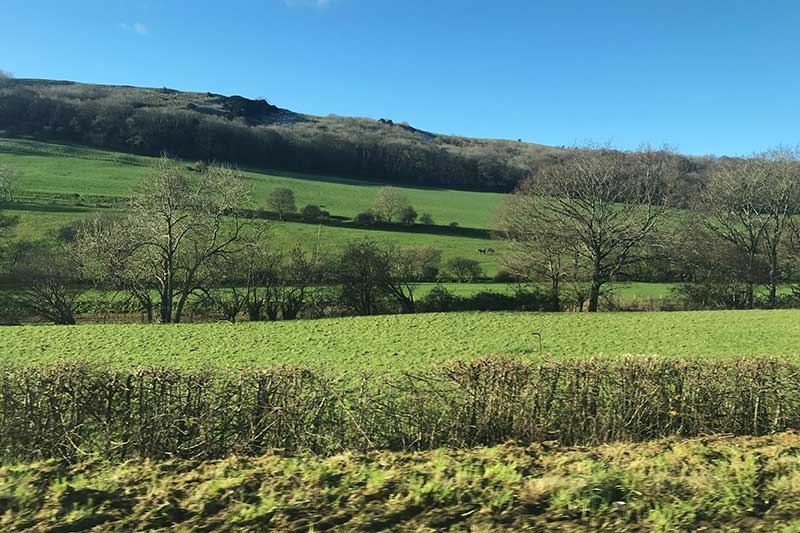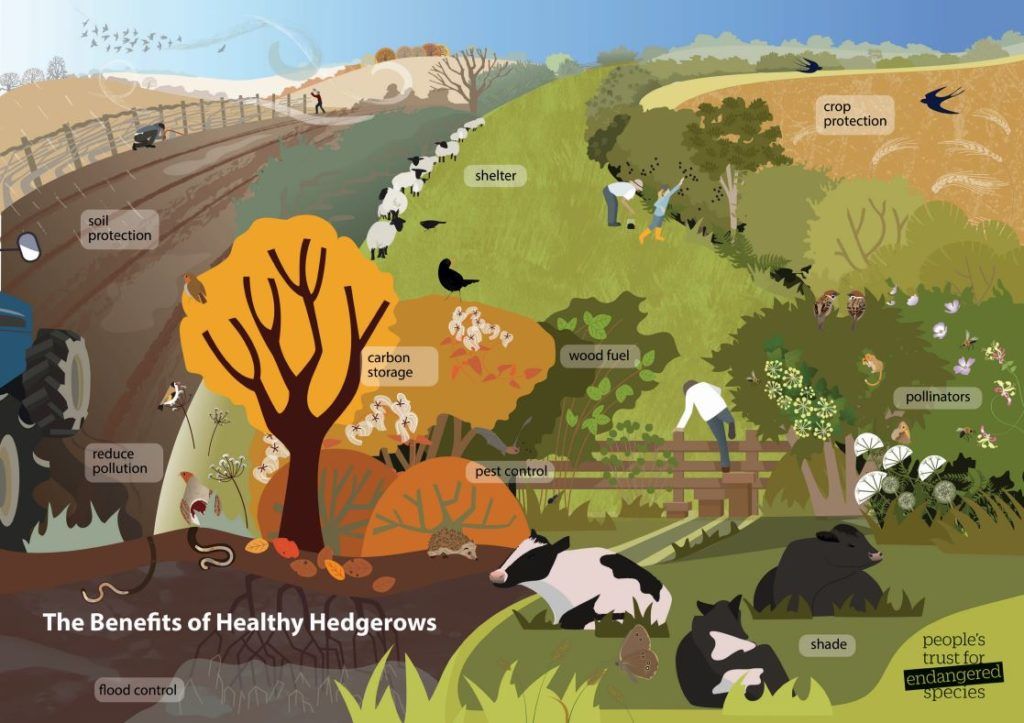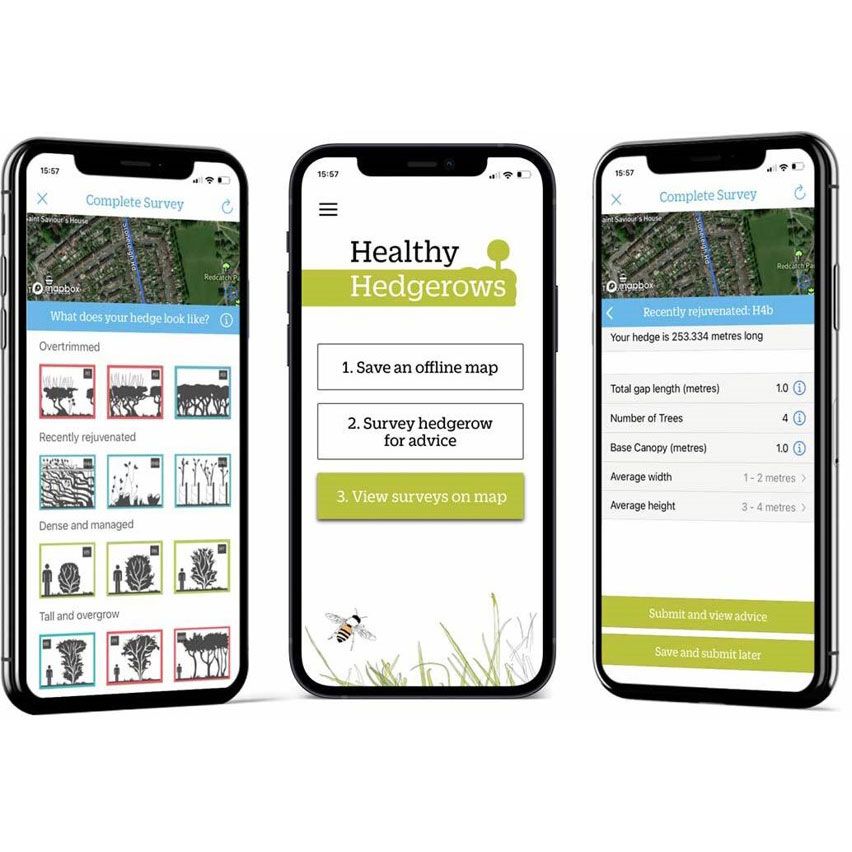What have hedgerows ever done for us?

Hedgerows provide a wide range of benefits to farmers and land managers. Here are some examples.
Hedgerows are an essential component of agricultural landscapes. They provide homes to many species and act as corridors linking remnant habitat patches. This allows wildlife to move freely in the wider landscape. However, they also deliver a number of additional benefits to people. Here is a list of some of the amazing things hedgerows do for us.
Hedgerows:
Provide shelter
Without shelter, livestock on farms have higher mortality rates and require more food. Shelter can increase lamb survival rates by reducing the effect of wind chill and thus hypothermia. In the summer months, shelter can reduce heat stress in dairy herds which contributes to a reduced milk yield. Shelter also creates warmer soils, which can extend the crop growing season.
Regulate water supply for crops
Hedgerows reduce water loss through evaporation by decreasing the wind speed over the ground surface. They also help to store water for later use. A 50m hedgerow at the bottom of a 1ha field can store between 150 and 375 cubic metres of water during rainy periods for slow release down slopes during dry periods. Hedgerows could play an important role in reducing flood risk, as they increase the rate of water infiltration and slow water flows. Their deep roots help to remove water faster from the soil than crops during periods of excessive rainfall.
Can improve animal health
As hedgerows reduce the damp conditions in fields, they may help to reduce the incidence rate of lameness.
Reduce soil erosion
Hedgerows reduce soil erosion by reducing surface wind speeds. They also act as a barrier to water-borne run-off.
Can increase natural pest enemies
Hedgerows increase populations of pest predators and parasitic species such as spiders, predatory beetles and parasitic wasps and hoverflies. One study showed that the abundance of wolf spiders, rove beetles and money spiders, all of which are important crop pest predators, decreased in fields as distance from hedgerow increased.
Natural enemies act as a form of biological control and so potentially reduce the need for farmer input or pesticide use. Rich flora in a hedge base will attract a host of predatory and parasitic species able to tackle crop pests.
Help sustain pollinator communities
Pollinator services to agriculture in the UK are valued at approximately £430 million annually (2007 figures). Hedgerows can provide important resources for pollinators outside the main crop flowering season. In the early spring, woody hedgerow plants like blackthorn and willow are important sources of pollen and nectar. Ivy, which can also be found in hedges, is one of the last flowering species of the year. It provides an important pollen and nectar supply for any pollinators still foraging in the late autumn.
Hedgerow quality can also influence pollinator abundance. One study found a greater number of bumblebees associated with high quality hedges (gaps no more than 2m long, presence of over three woody plant species and with a good structure) as opposed to hedges of poorer quality (gaps more than 2m long, poor structure and under three woody plant species).
Provide a sustainable source of wood fuel
Hedges and hedgerow trees can provide sustainable wood fuel if managed correctly. Pollarding is a traditional management of trees that can provide both wood fuel and animal fodder.
Can reduce the risk of bovine tuberculosis (bTB)
Hedgerows appear to be a key factor for improved biosecurity. ‘Hedge-poor’ farms, those with few hedgerows and large field sizes, have been found to have a greater risk of bTB outbreaks than ‘hedge-rich’ farms. Hedgerow availability, width and continuity, have also been shown to be more important than badger abundance in affecting bTB incidence.
Store carbon
A new hedgerow may store 600-800kg of carbon per year per 1000m, for up to 20 years.
Hedgerows can store this carbon in a variety of ways. This includes carbon storage in the above ground biomass; in the shrub layer and in hedgerow trees. One study found a 0.94:1 root-to-shoot ratio, meaning that the underground hedgerow biomass is also substantial and can play an important carbon storage role.
Hedgerow soils also accumulate soil organic carbon over time. A recent study found that soil organic carbon stocks were 32% greater on average in hedgerow soils compared to cropland.
The carbon storage capacity of hedges can subsequently be increased in a number of ways; by increasing the average size of a hedge across its lifecycle, by planting up gaps in hedges and by establishing isolated hedge trees with canopies distinct from the hedge shrub layer. Establishing isolated hedge trees must not be confused with allowing the shrub layer to develop into a tree line. When the shrub layer grows up into a tree line, the biodiversity value of the hedge is reduced through the loss of distinct habitat layers.
Reduce pollution
Hedgerows reduce the amount of fertilisers, pesticides and sediment that reach watercourses. They do this by acting as a physical barrier, increasing infiltration into the ground, and through nutrients being recycled by the trees, shrubs and other plants.

Health-check your hedgerows

The Healthy Hedgerows survey provides instant feedback about the health of the hedge and bespoke management advice. The data that you contribute helps us to understand the overall health of hedgerows at a national scale so that we are able to direct our conservation work. Learn more:
